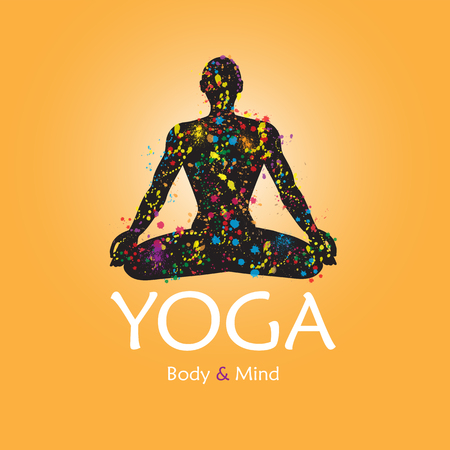1. Understanding Anxiety in Everyday American Life
Anxiety is a common experience for many people living in the United States today. From juggling work responsibilities and family life to dealing with financial pressures and social expectations, Americans often find themselves feeling overwhelmed or stressed. In fact, according to the Anxiety and Depression Association of America (ADAA), anxiety disorders affect over 40 million adults each year, making it the most common mental health concern in the country.
Prevalence of Anxiety in the U.S.
| Population Group | Percentage Experiencing Anxiety |
|---|---|
| Adults (18+) | 19% |
| Teens (13-18) | 32% |
| Women | 23% |
| Men | 14% |
This table shows that anxiety touches people of all ages and backgrounds, though some groups experience it more than others. It is not just about feeling nervous from time to time—chronic anxiety can seriously impact your daily life, relationships, sleep, and even physical health.
Common Stressors in American Life
- Work Pressure: Deadlines, long hours, and job insecurity can create ongoing stress.
- Family Responsibilities: Balancing childcare, elder care, and household duties is a challenge for many Americans.
- Financial Concerns: Paying bills, saving for the future, and managing debt are frequent sources of worry.
- Social Media & News: Constant exposure to information and comparisons can fuel anxiety.
- Health Issues: Personal or family illnesses add another layer of stress.
The Growing Need for Effective Coping Strategies
With so many stressors present in everyday life, finding healthy ways to cope has become more important than ever. Traditional approaches like talk therapy and medication help many people, but there is increasing interest in holistic practices such as mindfulness meditation. This evidence-based technique offers a simple yet powerful way to manage anxiety by training your mind to focus on the present moment instead of worrying about the past or future.
2. What is Mindfulness Meditation?
Defining Mindfulness Meditation
Mindfulness meditation is a mental practice that encourages you to focus your attention on the present moment. Instead of letting your mind wander to worries about the future or regrets from the past, you learn to notice your thoughts, feelings, and sensations as they arise—without judging them as good or bad. This approach helps reduce anxiety by breaking the cycle of overthinking and emotional reactivity.
Key Principles of Mindfulness Meditation
| Principle | Description |
|---|---|
| Present Moment Awareness | Paying attention to whats happening right now, rather than dwelling on the past or worrying about the future. |
| Non-Judgment | Observing thoughts and feelings without labeling them as “right” or “wrong.” |
| Acceptance | Allowing experiences to be just as they are, even if theyre uncomfortable. |
| Gentle Redirecting | If your mind wanders, gently bring your focus back to your breath or body sensations. |
How Mindfulness Meditation is Practiced in America
In the United States, mindfulness meditation has become widely accepted in both clinical and everyday settings. Many Americans practice it through:
- Guided Meditations: Apps like Headspace and Calm offer step-by-step instructions for beginners.
- Meditation Classes: Community centers, yoga studios, and even some workplaces offer group sessions.
- Therapeutic Programs: Healthcare providers might recommend mindfulness-based stress reduction (MBSR) programs for those dealing with anxiety.
- Self-Practice at Home: Many people set aside a few minutes each day to sit quietly, focusing on their breath or a simple mantra.
A Typical American Mindfulness Session Looks Like:
- Sitting comfortably with eyes closed or softly focused.
- Tuning into the sensation of breathing in and out.
- Noticing when the mind drifts—and gently returning attention to the breath.
- The session can last anywhere from 5 to 30 minutes, depending on comfort level and schedule.
Main Takeaway:
Mindfulness meditation teaches you to be more aware of your thoughts and emotions without letting them control you. Practiced regularly, it can help reduce anxiety and improve overall well-being in a way that fits seamlessly into modern American life.

3. Scientific Evidence Supporting Mindfulness for Anxiety Reduction
Landmark U.S. Studies on Mindfulness and Anxiety
Over the past few decades, mindfulness meditation has gained serious attention from researchers and healthcare professionals in the United States. Several well-designed studies and clinical trials have shown that practicing mindfulness can help reduce anxiety symptoms in a variety of settings. Below is a summary of some of the most important research conducted in the U.S.
Key Research Findings
| Study | Year | Participants | Main Outcome |
|---|---|---|---|
| Kabat-Zinn et al. (University of Massachusetts) | 1992 | Patients with Generalized Anxiety Disorder (GAD) | Significant decrease in anxiety and panic symptoms after 8-week Mindfulness-Based Stress Reduction (MBSR) program. |
| Hoge et al. (Harvard Medical School) | 2013 | Adults with diagnosed anxiety disorders | MBSR group had greater reduction in anxiety than stress management education group. |
| Goyal et al. (Johns Hopkins University) | 2014 | Meta-analysis of 47 clinical trials | Moderate evidence that mindfulness meditation programs improve anxiety, depression, and pain. |
| Creswell et al. (Carnegie Mellon University) | 2016 | Adults reporting high stress levels | Mindfulness training led to lower levels of stress-related inflammation and anxiety compared to a relaxation program. |
The Role of Mindfulness-Based Stress Reduction (MBSR)
The Mindfulness-Based Stress Reduction (MBSR) program, originally developed by Dr. Jon Kabat-Zinn at the University of Massachusetts Medical Center, is one of the most widely studied mindfulness approaches in the U.S. Multiple clinical trials have demonstrated that MBSR can significantly reduce symptoms of anxiety, even for people who have struggled with worry for years. MBSR typically includes guided meditation, gentle yoga, and group discussions over an 8-week period.
How Does Mindfulness Work for Anxiety?
Researchers suggest that mindfulness helps by teaching people how to focus on the present moment instead of worrying about the future or ruminating on the past. This shift can make anxious thoughts less overwhelming and helps individuals respond more calmly to stressful situations. Brain imaging studies from American universities also show that mindfulness practice can actually change parts of the brain involved in emotional regulation and stress response.
A Look at Real-World Benefits
Apart from clinical settings, many Americans are using mindfulness apps, group classes, or online programs to manage daily anxiety. These tools often draw from the same evidence-based practices tested in research studies, making them accessible ways to experience similar benefits at home or on-the-go.
4. Practical Ways to Incorporate Mindfulness Into Your Daily Routine
Making Mindfulness Work for Your American Lifestyle
Mindfulness meditation doesn’t have to mean sitting in silence for hours. In fact, you can weave it into your busy day, whether you’re at work, at home, or out in your community. Here are some easy and practical ways to get started:
At Work: Stress Less, Focus More
| When | How | Why It Works |
|---|---|---|
| Morning Arrival | Take 2 minutes at your desk before opening emails. Close your eyes, focus on your breath, and set a positive intention for the day. | Helps you start with clarity and calm. |
| Coffee Break | Pause while sipping your coffee. Notice the warmth, aroma, and taste. Let thoughts come and go without judgment. | Turns a routine habit into a mindful moment. |
| Between Meetings | Do a quick body scan—notice tension in your shoulders or jaw and consciously relax those muscles. | Reduces built-up stress throughout the workday. |
At Home: Creating Calm Spaces
- Mindful Meals: Put away devices during dinner. Savor each bite and appreciate the flavors. This not only supports digestion but also brings family togetherness.
- Bedtime Wind-Down: Try a five-minute guided mindfulness meditation from an app like Calm or Headspace. Focus on relaxing each part of your body as you prepare for sleep.
- Laundry or Dishes: Use chores as mindfulness practice. Feel the textures, notice sounds, and let yourself be present in the task rather than rushing through it.
In Your Community: Everyday Mindfulness On-the-Go
- Walking Meditation: Whether youre walking the dog or heading to the subway, notice each step and the sensation of movement. Pay attention to sights and sounds around you without getting lost in thought.
- Waiting in Line: Instead of checking your phone, take three slow breaths. Observe your surroundings and any emotions that arise without reacting.
- Parks and Public Spaces: Find a bench at lunchtime or after work. Sit quietly for a few minutes, tuning into the rhythm of life around you—the wind in the trees or people passing by.
User-Friendly Apps & Resources
You don’t need fancy equipment to practice mindfulness—just a willingness to try! However, if you prefer guidance, there are plenty of free or low-cost resources made for Americans’ busy schedules:
| Name | Description | Where to Find It |
|---|---|---|
| Headspace | Bite-sized meditations perfect for commuting or lunch breaks. | App Store/Google Play |
| Calm | Meditations and sleep stories to help unwind after work or before bed. | App Store/Google Play |
| YouTube Channels (e.g., The Mindful Movement) | Diverse guided sessions; many are under 10 minutes. | YouTube.com |
The key is consistency—not perfection. Just a few mindful moments sprinkled throughout your day can make a big difference in managing anxiety and staying grounded amid America’s fast-paced lifestyle.
5. Overcoming Common Barriers and Misconceptions
Skepticism: “Does This Really Work?”
Many Americans are skeptical about mindfulness meditation. It’s common to wonder if sitting quietly and focusing on your breath can really help with anxiety. However, research from major institutions like Harvard and Johns Hopkins shows that mindfulness meditation can reduce stress and improve mental well-being. If you’re unsure, consider starting with short sessions and keeping an open mind—think of it as a new skill to practice rather than a quick fix.
Time Constraints: “I’m Too Busy!”
One of the top reasons people don’t try mindfulness meditation is the belief that it takes too much time. The truth is, even just five minutes a day can make a difference. You don’t need to set aside hours or change your whole schedule. Try fitting mindfulness into your daily routine—during your morning coffee, while waiting in line, or before bed.
| Obstacle | Simple Solution |
|---|---|
| No free time | Meditate for 5 minutes before work or during lunch break |
| Can’t sit still | Try walking meditation or mindful breathing while moving |
| Easily distracted | Use guided meditations from apps like Headspace or Calm |
Misconceptions About Mindfulness
“Mindfulness Means Emptying Your Mind”
This is a common myth. Mindfulness isn’t about stopping thoughts; it’s about noticing them without judgment. Everyone’s mind wanders—it’s normal! When you notice distractions, gently bring your focus back to your breath or senses.
“You Need Special Equipment or Training”
You don’t need any fancy gear or a yoga studio membership to practice mindfulness. All you need is a quiet spot—your couch, office chair, or even your car (while parked!). There are plenty of free resources online if you’d like some extra guidance.
Cultural Considerations in the U.S.
In American culture, productivity and busyness are often valued. Mindfulness might seem at odds with this mindset, but taking time for yourself can actually boost focus and effectiveness in daily life. Remember: self-care isn’t selfish—it’s essential for managing anxiety and maintaining mental health.


